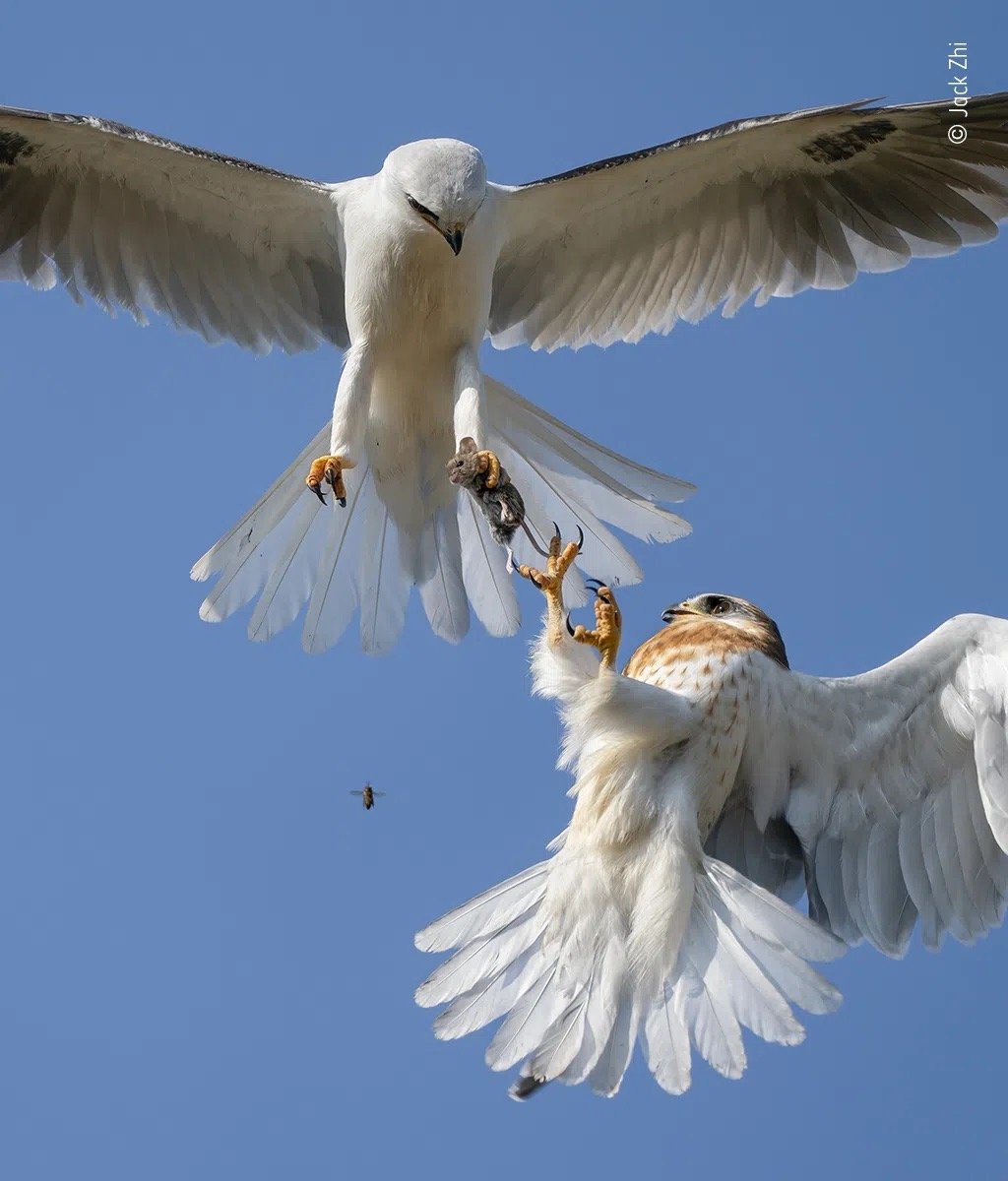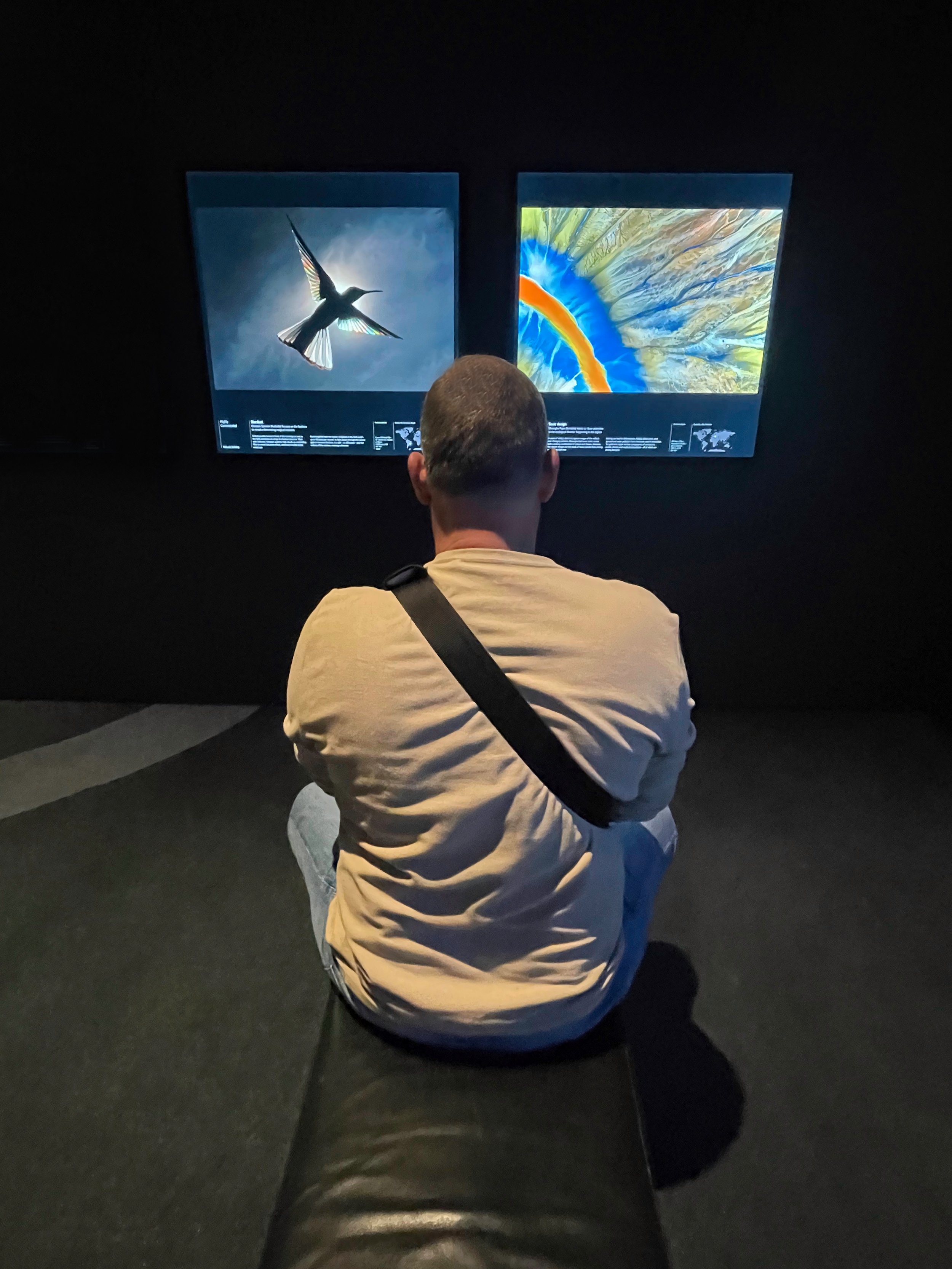Sydney the Frog - Second Incision
Friday dawned and we took the chance to drag out a long lie. Rested, we retraced last nights steps back to King Street Wharf and enjoyed a wonderful breakfast on the shores of Cockle Bay under a crisp blue winters’ sky. One of the planned activities for the weekend was a visit to the Natural History Museum’s Wildlife Photographer of the Year exhibition on display at the Maritime Museum at Darling Harbour. Running to March 2023, this showcase had been on the list for sometime and now seemed a perfect opportunity to shag that chicken.
Wildlife Photographer of the Year is the Natural History Museum's annual competition highlighting the unique and beautiful relationship between photography, science and art. What began in 1965 as a magazine competition with just 361 entries, over time blossomed into one of the world's most prestigious photography awards with over 50,000 yearly entries and a touring exhibition seen by millions around the globe.
From the very beginning, the aim of the competition has been to “enhance the prestige of wildlife photography in the hope that ultimately the awards will benefit the animals themselves, by creating greater public interest in them and in that all-important topic: conservation.”
All the finalists were truly spectacular and to a photographer, awe inspiring. Covering a broad scope of subjects, the images where entrancing, one bringing Fatpap to tears, with many coming from talented children aged 10 to 14. Each told a story - as a good image should - and we spent almost 2 hours picking through the 100 photographs reading their background, the artists biography, and taking special note of the camera settings. It should be disclosed no post image processing is allowed through the competition making these in field captures even more impressive.
Overall Winner - Creation, by Laurent Ballesta
In the inky darkness of the South Pacific Ocean, Laurent Ballesta captured a trio of camouflage groupers abandoning their swirling cloud of fertilised eggs to the currents off the Fakarava Atoll in French Polynesia. This unique spawning event only happens once a year and the mating habits of the camouflage grouper are well known among divers and underwater photographers, many of whom travel across the world to witness this magnificent spectacle of the natural world. Guided by lunar cycles, around 18,000 of these reef-dwelling fish gather each year on the full moon in July to spawn in a narrow channel linking the lagoon of the Fakarava Atoll with the open ocean.
This winning photograph was taken on a 24-hour dive at a depth of 20 metres. Usually requiring a 20-hour ascent, Laurent and his team managed to avoid this extra time by changing their gas mixtures to suit their depth.
Laurent's photograph is the result of five years of expeditions, 3,000 hours of cumulative night dives and 85,000 photographic triggers.
The exhibition proved to be an amazing experience, bringing to life bewildering animals from so many corners of the globe. The stories behind each photographer and their committed passion in achieving their “imagined” shot vindicated our own obsession sometimes sitting in the same place for hours, or travelling vast distances just to grab that one frame already imprinted on our mind.
We took full advantage of the $25 entry fee - proudly sponsored by the NSW Government Dine & Discover initative - and pottered around the Maritime Museum for another hour or so. Here we stumbled upon a serendipitous factoid circling back to our very first blog. We last year visited Blowering Reservoir near Tumut, NSW as part of our Gladys Lap. This majestic waterway was the location of Ken Warby’s 1978 world water speed record set in the Spirit of Australia, and today we saw that very craft!
Cabled precariously overhead, this surprisingly small, and seemingly flimsy contraption somehow reached 511 Km/h. The record stands to this day with Ken becoming the first and only person to exceed 300 mph on water who lived to tell the tale. Kudos to you Mr Warby.
Looking to slice another vein of the city, we hightailed it across the road to Pyrmont Bay station to catch our first ever ride on the highly controversial City Light Rail network. Having no plans - other than not walking - we jumped aboard the next service. Looping around the back of Darling Harbour and The Convention Centre, it was an exciting ride giving our feet a much needed rest. Only three stops in we spontaneously alighted at Paddy’s Market noticing they were in fact open on a Friday.
Paddy’s Market is akin to the worlds biggest Easter Show bag - plastic and full of shit - but it’s fun while your there and we goofed around for a while looking for some kooky outfits for Splendour next month and some presents for a few weddings we have later in the year. Alas, nothing was really cheap enough.
Fatpap used to take his kids into the city on a yearly basis to visit the markets then chow down on some yum cha across the road in Dixon street. It only seemed appropriate to relive that tradition so we crossed the tram tracks to Chinatown for a latish lunch. Unsurprisingly, Fatpap selected one too many bamboo baskets and left the Emperor’s Garden fatter than ever.
The light rail caused all manner of concern during its construction phase with many city goers and shop owners denouncing its need. With all that forgotten, it must be said the closure of George Street from Central to the Quay was a design master stroke bringing the thoroughfare in line with some of the greatest boulevards of the world. The absence of cars and a wide, open pedestrian corridor has transformed the city centre, and we took our time waddling back to our hotel while window shopping, and in general, “touristing” the town.
Back at the apartment, we unleashed the clodhoppers and took a brief nap in preparation of our night ahead.
Through the evolution of Sydney the Frog, we lucked out with dates and scored tickets to a special event at the Horden Pavilion. Normally a cow of a venue to frequent, our new friend the light rail rolls right past its doors so we of course hopped another tram to smash out a Ball Park Music gig!
This Brisbane based quintet ranks among our favourite bands ever and we believe grossly underestimated by the wider masses. Having the previous week released their 7th studio album, Ballpark were on their first headline tour in almost 4 years bringing along support acts well worth the ticket price alone. Melbounre’s Rat!Hammock, Adelaide’s Teenage Joans (Triple J Unearthed High winners at only 17 years!), and Arnhem Land’s King Stingray were an eclectic ensemble ideally tiered to showcase their respective talents.
This was the fifth time we’d worshiped BPM and their honest, sweet melodies combined with idiosyncratic lyrics that never grow old. Their rich back catalogue of tunes reach either anthemic levels, invoke passionate sing-alongs, or are quirky, upbeat and joyous tracks ripping the everyday world from the listener, replacing it with teenage years or summers at the beach.
Making the night more exceptional, this was BPM’s 500th live performance and they amped up the energy by curating a show for the fans, and not their own self congratulations. Belting out 19 tunes spanning all 7 albums, they played to the two hour mark leaving these old boilers sore footed and sweat drenched holed up in the 15th row of the mosh without our regular libations.
After the gig we sauntered the 200 metres back to the light rail station singing the encore tune with other patrons mesmerised just how bloody good the band really is. The truly convenient, and now indispensable old red tram returned us to the city where we alighted within the shadow of our hotel. Now the only thing that could top off such a great night would be a chili kebab at 1:00am in the middle of George Street.
So, naturally, we did just that.


































































